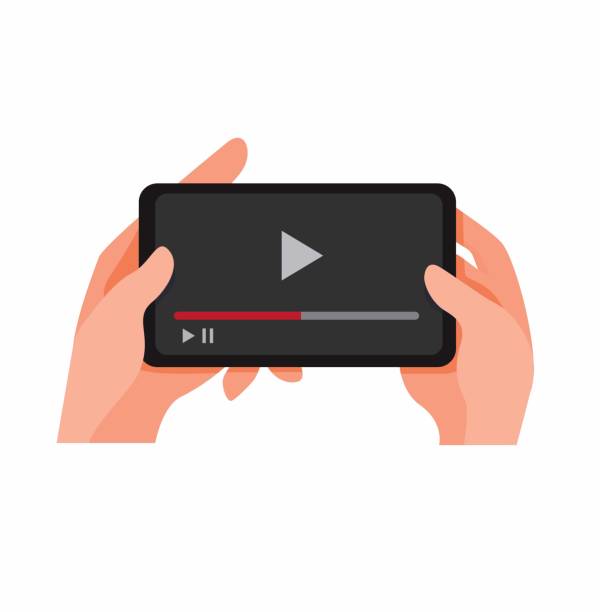Facilitating Active Learning and Providing Meaningful Feedback
with Video Modeling and Lesson Recordings.
Creator: Aryo Hadi | Credit: Getty Images/iStockphoto
According to ISTE Standard 4.5b, an effective coaching model must 1) engage educators in active learning through authentic or simulated activities that may include challenges, problem solving and reflection, and 2) provide timely, specific and actionable feedback that results in improvements to the teaching practice and enhances student learning outcomes.
- What are some models for engaging educators in active learning during professional development?
- What are best practices for coaches when providing feedback to educators?
- How can coaches support educators in the use reflection in order to improve their practice?
One only needs to look at YouTube and Vimeo to find thousands of educational videos on a wide range of topics. Educational videos have many advantages over in-person teaching. The University of Minnesota Information Technology page recommends recording lectures to increase class time for Active Learning and Feedback. This site provides video examples on different types of recorded lectures, including: presentations, demonstrations, interview and animation. Providing short video clips frees up time for active learning during professional development sessions, and provides content for discussion. Another use of videos is for teachers to record a portion of their classroom lessons in order to gain deeper insight and a different perspective of their own lesson. The recording itself provided feedback to the teacher, and an opportunity for self-reflection.
The article Every Picture Tells a Story: The Power of 3 Teaching Method discusses the benefits of pre-recorded lectures in order to allow active leaning during synchronous or in person sessions. Besides flipping the classroom, the sessions had a “discussion starter” approach where the teacher introduced the topic, then the students became active participants by having to “teach” or demonstrate the skill. While this paper is intended for teachers, as opposed to coaches, the benefits align with professional development. One example of this flipped approach was used by the Monroe School District at the beginning of the Pandemic in 2019. Teachers were given weekly videos containing the lecture on how to use Canvas LMS, and instructions for completing a task. There were synchronous online sessions that teachers were invited to attend to ask questions or get help completing the tasks. Often teachers were able to complete the tasks without further meetings. Under this model, active learning happened when teachers were engaged in the task. Feedback was provided during the help sessions.
The flipped approach can be effective when directions are followed by all participants. However, there is a drawback to this model as some participants may not complete this task. Dr. Liz Ebersole cautions “One thing to remember is that just like with flipped learning with PK-20 students, not all PD participants will have watched or read what they were supposed to before the synchronous meeting.” She recommends having a plan in place for differentiation.
A Video-Based Coaching Cycle
According to the article, Coaching for Change, video-Based Coaching from EL Education, “Capturing and watching classroom videos is quickly emerging as a high-leverage professional learning practice for educators across the country.”
The following graphic illustrates a video-based coaching cycle from EL Education.

Characteristics of Effective Educational Videos
In the article Effective Educational Videos: Principles and Guidelines for Maximizing Student Learning Brame recommends to consider the following elements when creating educational videos: managing cognitive load, maximizing student engagement, and promoting active learning.
- To keep cognitive load manageable, Brame recommends highlighting important information, chunk information, avoid extraneous information like distracting music or sounds, and using auditory and visual elements.
- To increase student engagement the recommendation is to keep the videos less than 6 minutes long, using fast and enthusiastic conversational language, and emphasizing the relevance of the video to the learning goal.
- To promote active learning, Brame suggests including interactive and guiding questions in the video, as well as interactive features that give control to the learner, and adding specific tasks that encourage the learner to apply the concepts from the videos.
The article includes a detailed table with explanations and examples on the why and how to incorporate these three elements to educational videos.
Conclusion
Instructional technology coaches can leverage on digital tools that can be used to create videos that model best practices. Videos can also be used to provide feedback. The combination of in-person coaching and instructional videos not only facilitates but enhances the coaching experience of both the coach and the teacher. Videos offer the flexibility of time and space as they can be accessed several times, any time. Videos can be used to learn a skill, and/or to evaluate one’s own progress. The videos can also include an interactive element, a checklist, and guided questions to foster self-reflection.
References
Brame, C. J. (2017). Effective Educational Videos: Principles and Guidelines for Maximizing Student Learning from Video Content. CBE – Life Sciences Education, 15 (4) https://doi.org/10.1187/cbe.16-03-0125
Brock, M., Seaman-Tullis, R., & Gatsch, A. (2018). Efficacy of video modeling and Brief Coaching on Teacher Implementation of an Evidence-Based Practice for Students with Severe Disabilities. Journal of Special Education Technology. DOI: 10.1177/0162643418770639
EL Education (2022). Coaching for Change: Video-Based Coaching. https://eleducation.org/resources/coaching-for-change-video-based-coaching Accessed on February 19, 2022.
ISTE Standards: Coaches. https://www.iste.org/standards/iste-standards-for-coaches Accessed on February 20, 2022
Kates, F. R., Byrd, M. D., & Haider, M. (2015). Every Picture Tells a Story: The Power of 3 Teaching Method. Journal of Educators Online 12(1) p. 189-211. https://eric.ed.gov/?id=EJ1051038
Kissel, B and Et al. (2011). Differentiated Coaching: Fostering Reflection with Teachers. The Reading Teacher, 64(7), p. 498-509. DOI: 10.1598/RT.64.7.3
Learning Forward. (2022) Implementation. Accessed on February 20, 2022. Implementation | Learning Forward
University of Minnesota. (2022). Increase Class Time for Active Learning and Feedback by Recording your Lectures. Information Technology Good Practices. https://it.umn.edu/services-technologies/good-practices/increase-class-time-active-learning



